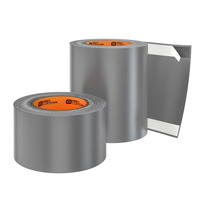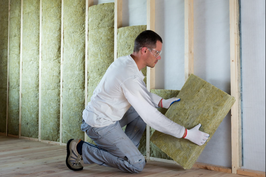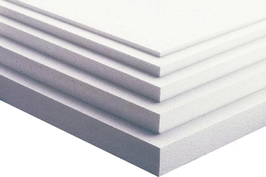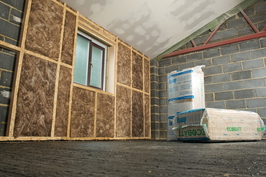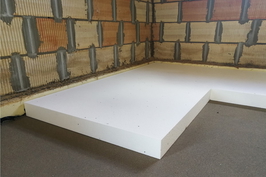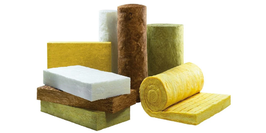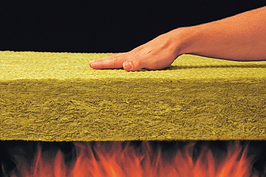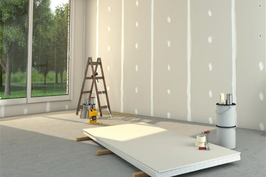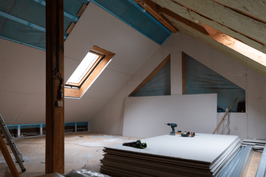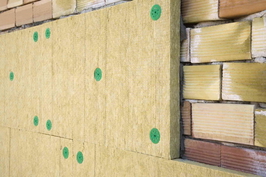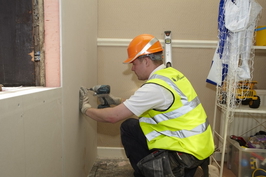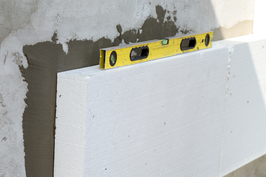Foam Loft Insulation
Foam loft insulation involves the use of sprayable or board-based materials such as polyurethane, polystyrene, or phenolic foam. Its primary purpose is to enhance thermal efficiency, improve air sealing, and control moisture within building envelopes. When correctly applied, foam loft insulation creates a continuous barrier that reduces heat transfer, prevents draughts, and limits moisture infiltration—factors that can otherwise lead to mould growth or structural issues.
The effectiveness of foam loft insulation depends on the quality of the materials used and the precision of the installation. Proper application ensures long-term durability and contributes to energy savings, making it a cost-effective solution for homeowners and builders alike.
Various types of foam loft insulations and application techniques can optimise building performance, further strengthening the energy efficiency and comfort of a property.
Understanding the Types and Composition of Foam Loft Insulation
Foam loft insulation comprises several different types, each distinguished by specific chemical compositions, manufacturing methods, and physical characteristics that influence their insulative performance and appropriateness for various applications.
Spray foam insulation mainly consists of polyurethane and isocyanate, which chemically react and expand upon mixing to form a foam that adheres strongly to surfaces. Within spray foams, open cell variants are less dense, featuring a lower heat transfer coefficient per millimetre. These open cell foams offer effective soundproofing and moisture permeability. Open cell foam has a typical R-value of around R-3.5 per inch. In contrast, closed cell foams are denser, providing higher thermal insulative properties and added structural support.
Foam boards made from polystyrene include expanded (EPS) and extruded (XPS) types. These differ chiefly in their manufacturing processes, affecting their density and resistance to moisture.
Expanded polystyrene is more porous and generally more susceptible to moisture ingress, while extruded polystyrene offers better moisture resistance and strength.
Phenolic foam, formed from phenolic resin and blowing agents, is a rigid material known for its excellent fire resistance and thermal performance. It's also valued for its durability and environmentally friendly profile.
Each of these foam loft insulation types has unique properties suitable for particular applications, ensuring effective thermal management and compliance with building safety standards across the UK.
Enhancing Energy Efficiency and Thermal Performance With Spray Foam
By creating a continuous, airtight barrier within building envelopes, spray foam insulation significantly enhances energy efficiency and thermal performance. It can reduce energy consumption by up to 45.5% in retrofit projects, with some manufacturers claiming savings as high as 70%. However, such figures are optimistic and depend on specific conditions and proper installation. Spray Foam is Energy Efficient and addresses common leak spots such as attic hatches, wiring holes, and basement rim joists, which helps improve overall thermal performance. Spray foam's high thermal resistance, often expressed through low U-values, outperforms many traditional insulations, thereby reducing heat transfer and helping to maintain consistent indoor temperatures. Its seamless application minimises gaps, thermal bridging, and air leaks, which directly decreases heating and cooling costs. Additionally, its capacity to lower heating, ventilation, and air conditioning (HVAC) sizing by up to 35% results in reduced equipment costs and energy use. This combination of insulation and airtightness makes spray foam an effective solution for enhancing overall building energy performance.
The Role of Foam Insulation in Air Sealing and Moisture Prevention
Effective air sealing in attics and lofts largely depends on the use of aerosol foam insulation, which expands significantly upon application to fill gaps, cracks, and other areas vulnerable to air leakage. This expansion creates a highly effective, airtight barrier that prevents unwanted airflow, while also acting as a vapour retarder, reducing moisture transmission. Homeowners can save up to 15% on heating and cooling costs, highlighting its importance.
By sealing air leaks, foam insulation minimises heat loss, which can lower heating and cooling costs by up to 20%. Additionally, it prevents humid external air from entering and condensing inside the building, reducing the risk of mould growth and structural damage. Unlike traditional methods, polyurethane spray foam remains resilient over time, resisting shrinking, gapping, and degradation. This durability is supported by industry standards and testing, which ensure long-term functionality for moisture control and indoor air quality.
Proper application of foam insulation can significantly enhance the energy efficiency of your home while maintaining a healthier indoor environment. Its ability to provide a comprehensive seal makes it an excellent choice for managing both air leakage and moisture ingress, especially in hard-to-reach or irregularly shaped spaces.
Cost, Longevity, and Installation Benefits of Foam Loft Insulation
The costs associated with foam loft insulation can vary considerably depending on several factors, including the type of foam used, the size and complexity of the installation area, and regional labour rates across the UK.
Typically, aerosolised foam insulation materials cost between £20 and £50 per square metre. On average, you can expect to pay around £37 per square metre for materials alone in the UK as of 2025. For an average three-bedroom semi-detached house, the total installation expenses are likely to range from approximately £2,500 to over £4,000.
These costs are influenced by the type of foam chosen; open-cell foam generally costs around £21.50 per square metre, while closed-cell foam can be priced up to £47.50 per square metre.
Labour costs are an additional consideration and usually amount to around £250 per day, although this can vary depending on your specific regional labour rates.
It’s worth noting that grants such as the Green Homes Grant (GHG) or ECO4 scheme may be available to help reduce expenses for eligible households.
One of the key advantages of foam loft insulation is its longevity. When properly installed, it can maintain its insulating properties for up to 30 years, offering a durable solution that doesn't significantly degrade over time. Choosing high-quality materials and professional installation ensures optimal performance and maximizes the investment’s benefits.
This longevity helps justify the initial investment by providing long-term energy efficiency benefits. However, improper installation or low-quality materials can compromise its durability and safety over the years.
Conclusion
Foam loft insulation provides a durable and effective solution for enhancing energy efficiency through its excellent thermal performance, air sealing, and moisture prevention properties. Its various types and formulations are designed to meet different insulation requirements, making it a versatile choice for UK buildings. The long-lasting nature of foam loft insulation, combined with its straightforward installation process, adds to its practicality.
Careful consideration of costs and maintenance needs ensures optimal application and performance. When installed correctly, foam loft insulation can significantly improve indoor comfort, reduce energy consumption, and offer a reliable, long-term insulation strategy for both residential and commercial properties across the UK.
